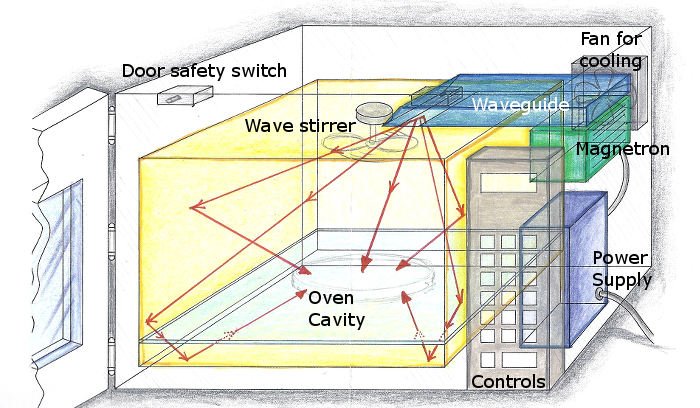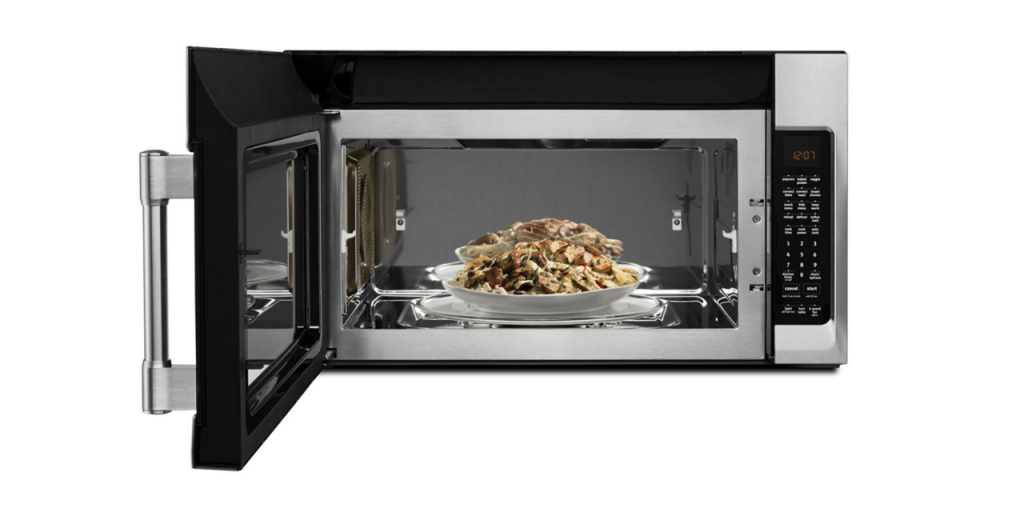Convection microwave ovens have become popular for their versatility and convenience.
These multifunctional devices were once considered a luxury but are now common in many households.
However, as with any appliance, it’s essential to weigh the benefits and potential drawbacks.
This article delves into the disadvantages of convection microwave ovens, offering insights to help you decide whether this modern kitchen marvel aligns with your cooking needs and lifestyle.
From understanding the unique features of convection microwaves to evaluating their real-world utility and cost-effectiveness, we aim to provide a balanced view to inform your purchasing decision.
Understanding Convection Microwave Ovens

A convection microwave oven is more than just a basic kitchen appliance.
It’s a hybrid that combines the quick heating capabilities of a traditional microwave with the baking and roasting functions of a convection oven.
This fusion allows for various cooking methods, from reheating leftovers to baking cookies and roasting chicken.
But what sets convection microwaves apart?
They employ microwave technology to heat food quickly and convectional heating to ensure even cooking.
This means you can bake a cake or cook a roast much like in a regular oven but with the added speed and convenience of a microwave.
However, despite these benefits, it’s crucial to consider the potential limitations and downsides of convection microwave ovens.
In the following sections, we’ll explore these aspects in detail, helping you decide whether a convection microwave oven is a suitable addition to your kitchen.
Working of a Convection Microwave Oven

The convection microwave oven is an ingenious blend of a traditional and convection oven, adapted to various cooking needs. Let’s explore how it functions:
Microwave Mechanism
In its basic form, the oven emits non-ionizing microwave radiation.
These microwaves bounce within the metal interior and interact with the food.
The water molecules in the food absorb these microwaves, causing them to vibrate and generate heat through friction.
This rapid vibration cooks the food, making microwaves excellent for speedy reheating and defrosting.
Convection Cooking
The convection component features a different mechanism.
It includes a heating element, often accompanied by a pair of fans—one in the front and the other in the back of the oven.
When activated, these fans distribute hot air uniformly inside the oven.
This air circulation ensures that food is cooked evenly, making it ideal for tasks like baking and roasting, where uniform heat distribution is essential.
Combination Mode
The real strength of a convection microwave oven lies in its combination mode.
This mode uses both microwave and convection functions. The microwave quickly heats the food, while the convection fans distribute heat evenly, resulting in food that’s not just cooked quickly but also evenly and thoroughly.
Advantages of Convection Microwave Ovens
Convection microwave ovens stand out for their versatility and efficiency in the kitchen. Here are some of their most significant benefits.
1. Multifunctionality
These appliances offer the dual benefits of a microwave and a convection oven. You can quickly reheat food, defrost ingredients, bake cakes, roast meats, and grilled vegetables with one device.
2. Even Cooking
These ovens circulate hot air around the food thanks to the convection feature, resulting in more evenly cooked dishes. This is particularly advantageous for baking and roasting.
3. Space-Saving Design
Convection microwaves are generally more compact than traditional ovens, making them ideal for smaller kitchens or those looking to save countertop space.
4. Energy Efficiency
They tend to cook food faster and at lower temperatures than conventional ovens, saving energy over time.
5. Advanced Features
Many models come with pre-programmed settings for various dishes, simplifying the cooking process. Features like auto-defrost and quick bake enhance convenience and usability.
6. Improved Food Quality
The combination of microwave and convection cooking can enhance the texture and flavor of certain dishes, giving you results similar to conventional ovens.
Disadvantages of Convection Microwave Ovens
While convection microwave ovens are celebrated for their multifunctionality, they come with certain disadvantages of convection microwave ovens that might affect your cooking experience and kitchen dynamics.
Here are some key disadvantages to consider.
1. Interior Capacity
Convection microwaves typically have a smaller interior compared to standard convection ovens.
This can limit the size of dishes you can cook or bake, making it less suitable for large families or those who frequently entertain guests.
2. Cost Factor
Although they offer additional functions, convection microwaves are generally more expensive than traditional microwaves.
This increased cost might not align with the budget or needs of every user.
3. Complex Cleaning
The inner structure, often made of stainless steel, can be challenging to clean, especially after cooking greasy foods or baking.
Regular and careful cleaning is essential to maintain its functionality and appearance.
4. Learning Curve
Adapting to a convection microwave’s settings and cooking times can require a learning period for those accustomed to traditional microwaves or ovens.
It’s not always as straightforward as a standard microwave.
5. Durability Concerns
With more complex functions and parts than a basic microwave, convection microwaves might face more wear and tear, potentially leading to more frequent repairs or replacements.
How is a Convection Microwave Oven Used?
There are some basic steps to use a convection microwave oven with some additional dos and don’ts, which ensures longer durability.
- While using the convection setting, the first thing to remember is that you should always use the shelf that comes along with it so that your food has a proper flow of air around it.
- The second thing is that you must drop off the temperature by 20 to 25 degrees above the recommended temperature.
- If you place more food than the oven’s capacity, the food may remain raw, leaving you disappointed. Also, it leaves those greasy stains that you find difficult to clean. You would want to place the food in the appropriate quantity to ensure that the food is evenly cooked.
- Just before you bake or roast anything, make sure that you preheat the oven for about 5 to 10 minutes. Preheating is recommended before cooking anything.
- While picking the cookware set for your convection microwave oven, choose the utensils suitable for the oven. Some convection microwaves can work with metals, too. You can go with ‘Pyrex’ or any other heat-resistant oven-safe glass. Do not use plastic, wood, or paper in your oven. It can cause major damage to your convection microwave.
Are Convection Microwaves Worth It?
Deciding on the worth of convection microwave ovens is subjective and varies based on individual needs and lifestyles.
These versatile appliances are a boon for those with limited kitchen space or who need a multifunctional cooking device.
Their ability to bake, grill, and microwave makes them a valuable asset for quick and varied cooking enthusiasts.
A convection microwave can be a cost-effective and space-saving kitchen solution for small households, such as bachelors in apartments.
It’s also ideal for those who enjoy baking or want a secondary cooking device for their holiday home.
However, if you’re not into regular baking or already have a conventional oven, a convection microwave might not be a necessary addition.
It’s about balancing the advantages, like space-saving design and multifunctionality, against the higher cost and maintenance compared to a standard microwave.
Summing It Up
A convection microwave oven is a valuable kitchen appliance for those needing versatility in a compact form.
It combines the quick heating of a microwave with the even cooking of a convection oven, ideal for small kitchens or as a supplementary cooking device.
Particularly useful for baking, grilling, and reheating, it suits small households or culinary enthusiasts with limited space.
However, a convection microwave might not be essential for those who rarely bake or already have a conventional oven.
Its worth depends on individual cooking styles, space considerations, and budget.
In summary, a convection microwave is an efficient, multifunctional appliance that can be a smart addition for users who will maximize its capabilities.


I really would like to have a convection microwave, small kitchen with less space, i have a counter top oven that bakes, air fries, but it takes up some room and is messy, my sister had one, she said it didnt work all to well, she said the food didnt get as crispy as claimed, my aunt has had several already claiming they didnt seem to last very long, so if others can share their real honest opinions, it might convince me more, thank you!